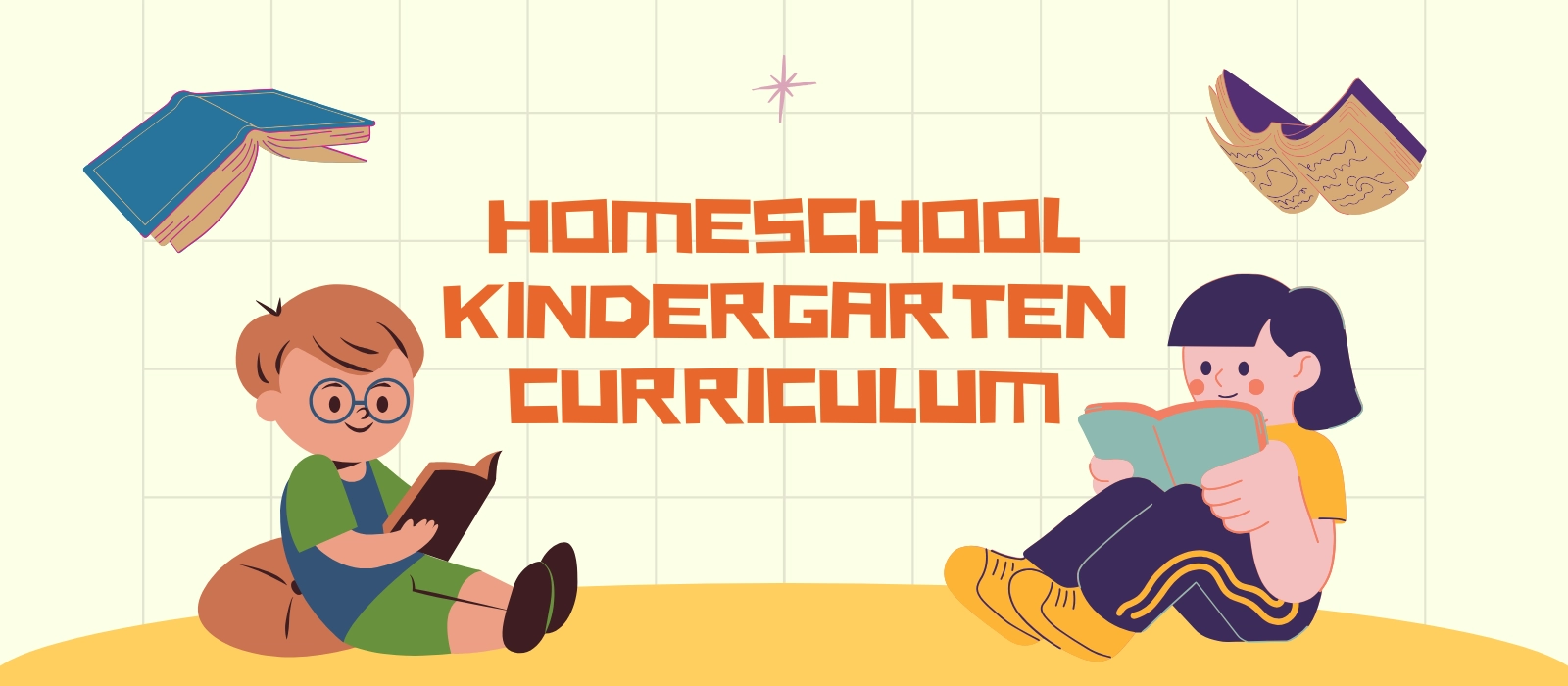Are you struggling to design the right homeschool kindergarten curriculum for your child? Do you worry that your lessons might miss something essential? Are you unsure about what subjects, methods, or materials create the best foundation for early learning success?
A solid homeschool kindergarten curriculum focuses on nine key components: literacy, numeracy, creativity, social skills, emotional development, physical activity, STEM awareness, life skills, and character education. Together, they provide a balanced learning experience that helps children grow confidently in both knowledge and behavior.
If you’re looking to build a structured, engaging, and child-centered homeschool program, this guide will walk you through every essential element you need to know.
1. Literacy Activities
Daily reading is the heart of any homeschool kindergarten curriculum. Literacy lays the foundation for all future learning. At this age, the focus isn’t on memorization but on creating joyful engagement with language.
I often recommend starting each morning with a read-aloud session. Choose picture books with repetitive text and rhythmic flow — titles that invite participation. When children hear stories daily, they begin to recognize sounds, rhythm, and meaning.
Add phonics-based games like “Find the Letter,” “Rhyming Basket,” and alphabet tracing on sand trays. These activities activate multiple senses, helping children remember letters and sounds through touch and movement. Flashcards and story sequencing cards strengthen comprehension and recall.
Encourage storytelling through drawing or puppet play. Ask open-ended questions such as “What happens next?” or “How did the character feel?” These questions promote narrative thinking and empathy.
You can also create a “print-rich environment” — label household items, maintain a mini library corner, and use magnetic letters on the fridge. According to [research placeholder link], children surrounded by words develop reading fluency earlier.
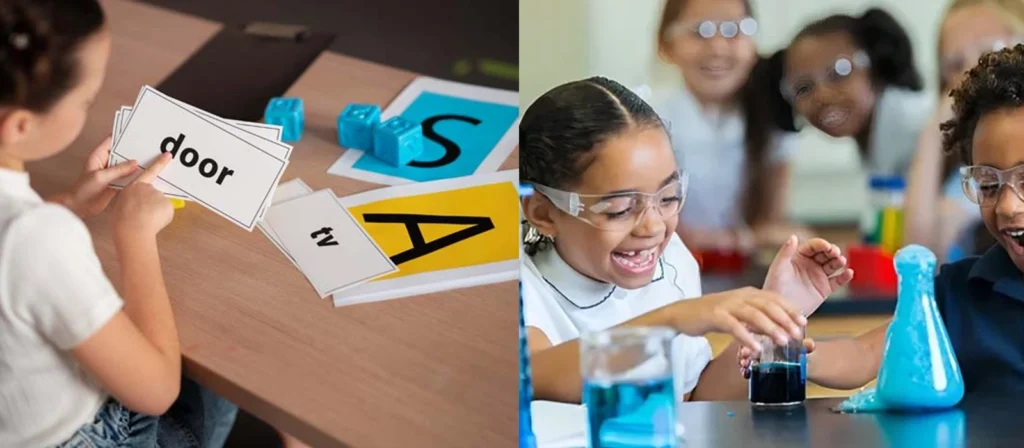
2. Math Concepts Through Play
Math at the kindergarten level should never be stressful — it should be play-based and sensory-driven. Numbers, patterns, and measurements come alive when children can touch, move, and experiment with them.
Start with counting bears, sorting bins, and colored beads. When children count physical objects, they understand quantity before symbolism. Introduce shapes through puzzles, tangrams, and building blocks.
One of my favorite activities is nature-based math: collecting leaves to sort by size, counting stones, or measuring water with cups. These experiences make math meaningful and concrete.
Use number songs and rhythm clapping to reinforce counting skills. Integrate math language naturally — “Can you give me two apples?” “Which tower is taller?”
At XIHA Furniture, we’ve noticed how classroom design affects engagement. Adjustable tables and open shelving encourage hands-on exploration — the very essence of mathematical thinking. A child who can move freely will think freely.
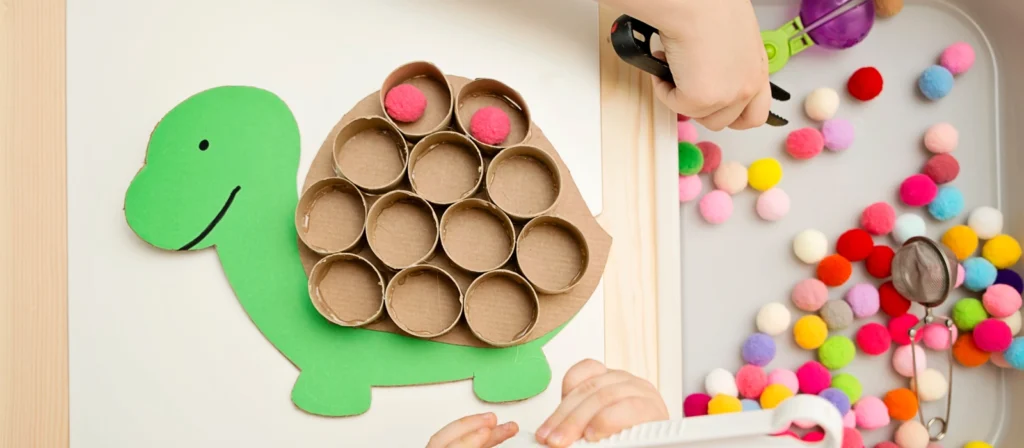
3. Science Exploration
Science is not a separate subject in early learning — it’s a way of thinking. The homeschool kindergarten curriculum should include daily opportunities for children to observe, question, and discover.
Children are born scientists. They love asking “Why?” and “How?”. Encourage this natural curiosity with hands-on experiments. Plant seeds and watch them sprout. Mix colors in jars of water. Test which objects float or sink. These simple activities build skills in observation, prediction, and recording results.
Take learning outdoors. Nature walks develop awareness of patterns, textures, and ecosystems. Let children collect leaves, draw what they see, or observe insects. According to [data placeholder link], exposure to outdoor learning improves both focus and creativity.
In our preschool furniture design, we always consider how materials support sensory exploration — transparent bins for water play, trays for sand experiments, and sturdy child-sized tables for hands-on projects.
4. Art and Creativity
Art connects the heart and the mind. In a homeschool kindergarten curriculum, creativity should not be treated as an “extra” subject but as an essential tool for emotional and cognitive growth.
Provide diverse materials — crayons, watercolors, recycled cardboard, beads, and clay. Let children choose what to create without imposing an outcome. The process is more important than the product.
Music, dance, and drama also belong here. Singing boosts language development, while rhythm instruments strengthen fine motor coordination. Acting out stories enhances comprehension and confidence.
Encourage reflection: after every art session, ask your child to describe their work. This builds vocabulary, emotional awareness, and presentation skills. Research shows that artistic activities improve neural connectivity in young learners [source placeholder link].
At XIHA Furniture, we integrate art-friendly classroom furniture — washable surfaces, easel stands, and open storage for art supplies — creating spaces that invite self-expression.
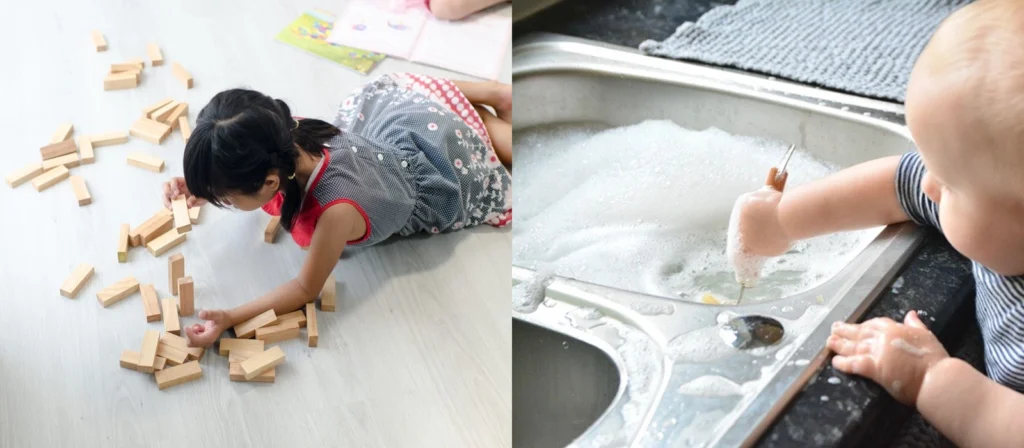
5. Gross and Fine Motor Development
Healthy movement equals healthy learning. The homeschool kindergarten curriculum must address both gross (large muscle) and fine (small muscle) motor skills.
Daily movement sessions like yoga, dance, or obstacle courses strengthen balance and coordination. Outdoor play — climbing, jumping, running — enhances spatial awareness and builds confidence.
For fine motor practice, incorporate activities like threading beads, clay modeling, scissor cutting, and using tweezers. These actions prepare children for writing and self-help tasks.
Our factory often designs child-sized furniture to match ergonomic needs — the right table height encourages correct posture, preventing fatigue during play or writing. Furniture design and child development are deeply interconnected.
6. Social and Emotional Learning (SEL)
Even when learning at home, children must develop empathy, patience, and emotional intelligence. SEL forms the emotional backbone of a successful homeschool kindergarten curriculum.
Start by naming emotions during daily routines: “I see you’re feeling frustrated,” or “That makes you happy.” Use emotion cards and storytelling to discuss feelings.
Role-play social situations — sharing toys, taking turns, apologizing. Reflection circles at the end of the day can help children talk about their experiences and build self-awareness.
When I visit kindergartens overseas, I often see teachers using simple tools like mirrors and drawing to teach self-recognition and empathy. These activities create strong foundations for positive behavior.
7. Thematic Units and Cross-Curricular Activities
A strong homeschool kindergarten curriculum is not a set of isolated lessons — it’s an interconnected web of learning. Thematic teaching makes knowledge meaningful and helps children see relationships between subjects.
Choose monthly or weekly themes such as “Seasons,” “Community Helpers,” or “Animals Around Us.” For example, a “Farm” theme might include counting eggs (math), reading farm stories (literacy), drawing animals (art), and planting seeds (science).
Themes make planning easier for parents and more engaging for children. They also mirror how professional preschools operate — blending different disciplines into one cohesive experience.
At XIHA, we design thematic furniture sets for early learning centers worldwide — farm-themed reading corners, ocean play areas, and seasonal classroom décor. Environment supports imagination.
8. Practical Life Skills
Practical life activities, inspired by Montessori education, cultivate independence and confidence. A homeschool kindergarten curriculum that includes life skills prepares children for the real world.
Teach children to pour water, fold napkins, button shirts, or prepare snacks. These actions refine motor control and build responsibility.
Assign small household tasks — watering plants, setting the table, or feeding pets. Celebrate effort, not perfection. As Maria Montessori said, “Never help a child with a task at which he feels he can succeed.”
Our preschool furniture lines are inspired by this principle — every shelf, chair, and table at child height, empowering children to act independently. Independence leads to confidence, and confidence leads to lifelong learning.
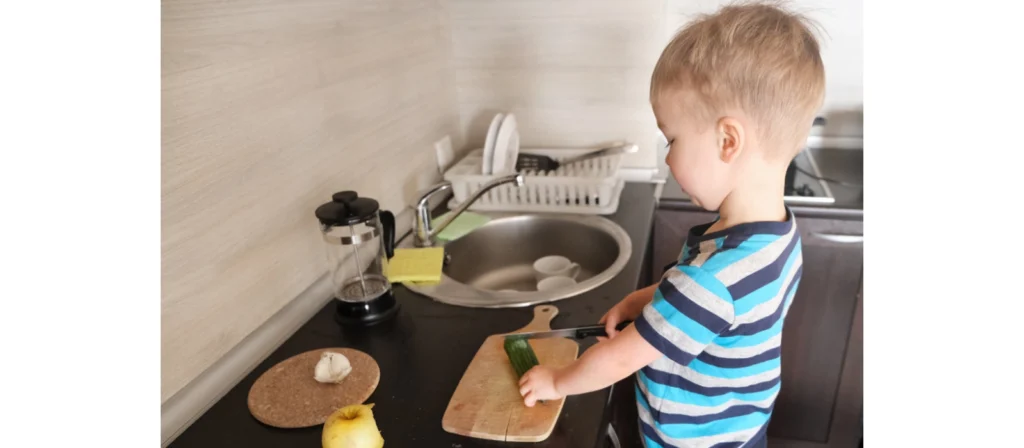
9. Environment and Materials
The environment is the “third teacher.” A successful homeschool kindergarten curriculum depends as much on the learning space as on the content.
Design a calm, organized environment. Use natural light, soft colors, and open shelving. Every item should have a place and purpose.
Flexible seating — bean bags, floor cushions, child-sized chairs — allows children to choose their workspace. This autonomy fosters self-regulation.
Invest in durable, eco-friendly materials. As a furniture manufacturer, I’ve learned that sustainable materials not only last longer but also create safer, toxin-free spaces for children.
At XIHA Furniture, our mission is to help parents and educators build environments that inspire curiosity, comfort, and creativity.
Conclusion
A well-rounded homeschool kindergarten curriculum nurtures every part of a child’s development — body, mind, and heart. When parents combine structure, freedom, and a supportive environment, learning becomes not just effective, but joyful.
But beyond the curriculum itself, what truly defines success is consistency and connection. Children thrive when learning is personal, meaningful, and filled with warmth. They remember the stories you read together, the laughter during messy art, and the pride of mastering a new skill. These small, daily moments build the foundation for lifelong curiosity.
As a father, educator, and CEO of XIHA Furniture, I’ve seen how the right environment transforms learning outcomes. When a child can move freely, explore safely, and reach materials independently, they develop self-confidence and focus. Whether you’re designing a homeschool corner or a full learning room, remember — the space you create teaches as much as the lessons you plan.
The homeschool kindergarten curriculum is not a rigid checklist. It’s a living, flexible system that grows with your child. There will be days of structure and days of spontaneity — both are equally valuable. Trust the process, observe your child’s interests, and adjust as needed.
If you ever feel uncertain, remember: learning at home isn’t about perfection; it’s about connection. The goal isn’t to replicate school — it’s to rediscover the joy of learning together. And with thoughtful preparation, balanced structure, and a nurturing environment, any home can become the most inspiring classroom in the world.
At XIHA Furniture, we continue to support homeschool parents and educators globally, providing child-centered furniture designed to make learning spaces safe, beautiful, and functional. Because in the end, when children feel comfortable in their surroundings, their potential knows no limits.

